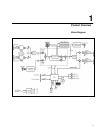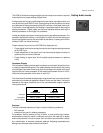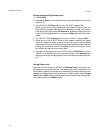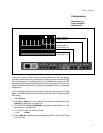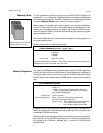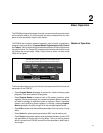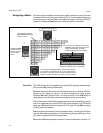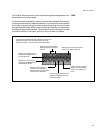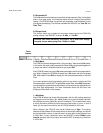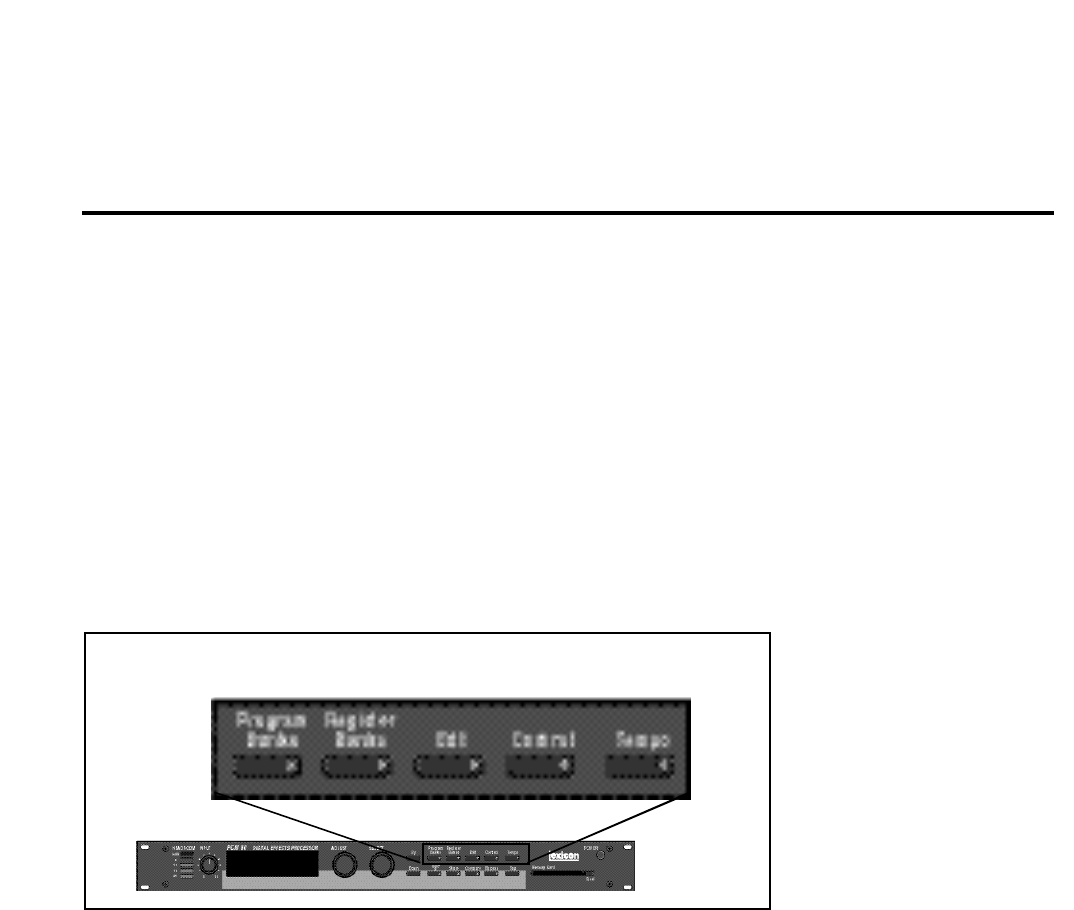
2-1
Basic Operation
2
Basic Operation
The PCM 80 provides a wide range of control over an extraordinary set of reverb
and modulation effects. All of the controls are easily accessed from the front
panel and are described in detail in this section.
The PCM 80 has five basic modes of operation, each of which is selected by
pressing a front panel button (Program Banks, Register Banks, Edit, Control
and Tempo). Each of these first four mode buttons has an LED which lights when
the mode is active. The Tempo LED (unless you elect to have this function turned
off) flashes the current tempo. When Tempo mode is active, no other mode
LEDs will be lighted.
Modes of Operation
The five mode buttons give you the first level of access to all of the functions and
parameters in the PCM 80.
• Press Program Banks repeatedly to access four banks of factory preset
programs. Each bank contains 50 programs.
• Press Register Banks to access a bank of 50 memory locations, called
registers, where you can store your customized effects. Memory cards can
be used for storage of additional banks of registers. When a formatted
memory card containing stored registers is inserted, pressing Register
Banks repeatedly will cycle through all of the available register banks.
• Press Edit to access all of the available parameters for the currently running
effect.
• Press Control to select system parameters, MIDI, card formatting, etc.
• Press Tempo to set tempo-related values that affect the delay time and LFO
rate parameters of the currently-running effect. This is an exciting feature
which is unique to the PCM 80, and which will be described in detail later in
this chapter.
The PCM 80 is always operating in one of these modes.
Here, the lighted LED indicates that Control mode is active.



